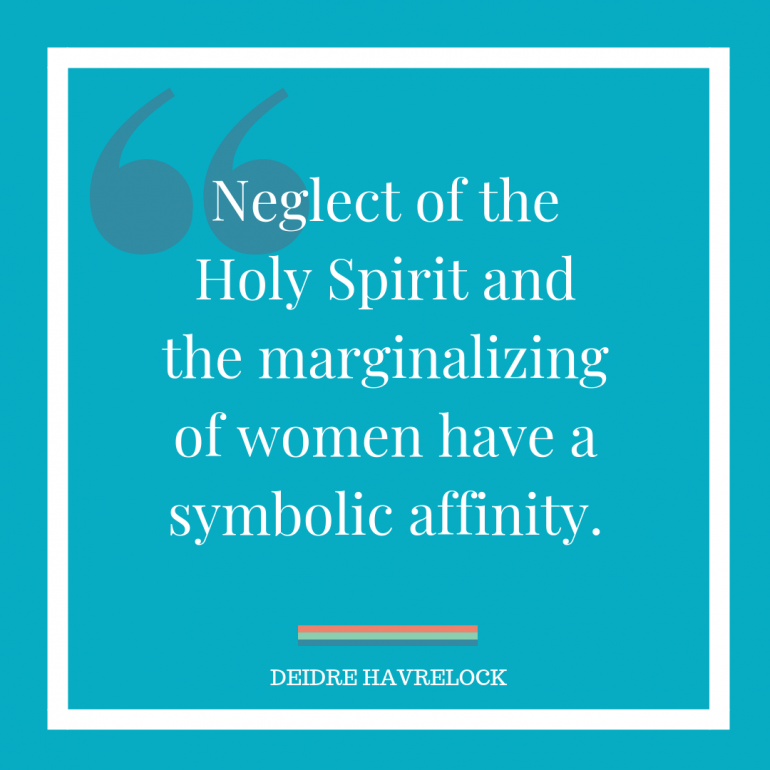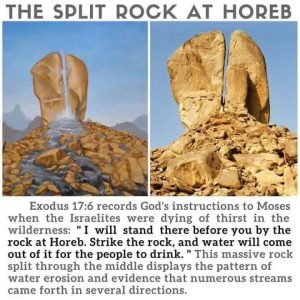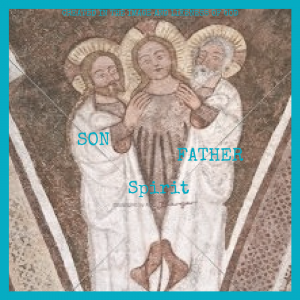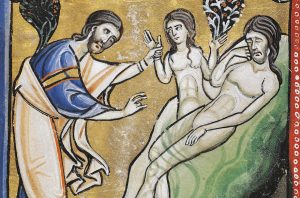I recently wrote a post regarding a tweet by author Lee Grady that mentioned his book Ten Lies The Church Tells Women. I had read Lee Grady’s wonderful book years ago and really liked it. It was inspirational for me at the time, but it struck me how those simple ten lies are only the tip of the iceberg. So I decided to come up with my own list of “ten more lies the church tells women.”
Ten More LIES the Church Tells Women
- Adam is the leader because God gave him the law.
- Eve was created to be Adam’s “assistant.”
- Eve’s “persuasive, seductive words” led Adam astray in the garden.
- Adam ate the forbidden fruit because of his “love” for Eve.
- Eve’s sin was that she “wanted to be like God.”
- Eve’s sin brought death to the human race.
- Eve’s purpose is to bear children.
- Adam is the leader of Eve because he is the “head.”
- God is male (and only male).
- The Holy Spirit is a “he.”
Okay, so that’s my short list (I have more lies, so don’t worry if this list bores you because there is more to come.) Below you’ll find my explanation of why these are lies. Go here for the OVERVIEW OF THE FIRST FIVE LIES:
#6 Eve’s Sin Brought Death to the Human Race
We all know Eve’s sin was that she was “deceived”:
For Adam was formed first, then Eve; and Adam was not deceived, but the woman was deceived and became a transgressor. —1 Tim. 2:13–14, NRSV
But I am afraid that as the serpent deceived Eve by its cunning, your thoughts will be led astray from a sincere and pure devotion to Christ. –2 Cor. 11:3, NRSV
Ultimately, Eve’s mind was targeted by Satan and her thoughts were led astray–not her heart. This is important because when it comes to death, being tricked or confused does not lead to death. It is only when a heart purposefully turns away from God in order to bow down to another god that death is embraced: “But if your heart turns away [from God] and you do not hear, but are led astray to bow down to other gods and serve them, I declare to you today that you shall perish” (Deut. 30:17-18). And so Eve’s sin did not break covenant with God. Adam’s sin did. Adam was not deceived. Adam knowingly and willfully bowed down to the serpent by eating the fruit and, therefore, the covenant of life was broken and death became permanent:
But the individual who acts deliberately, be he citizen or alien, commits an outrage against Yahweh, and such a man will be outlawed from his people. Since he has treated Yahweh’s word with contempt and has disobeyed his order, such a man will be outlawed absolutely and will bear the consequences of his guilt. –Num. 15:30–31, NJB, bold added
“But at Adam they transgressed the covenant.” –Hosea 6:7
For just as by the one man’s [Adam’s] disobedience the many were made sinners, so by the one man’s [Jesus’] obedience the many will be made righteous. –Rom. 5:19, additions mine
So the truth is Eve did not lead Adam astray; Adam’s deliberate disobedience led his heart astray. For more information on these two very different types of sin go to: Adam & Eve: Two Different Types of Sin
Lie #7 Eve’s Purpose is to Bear Children
Gender does not define purpose – God’s words and instructions to us in Genesis 1:28 defines our purpose. The original purpose given to us by God in Gen. 1:28 is the same purpose Jesus gives to all his followers. Adam & Eve’s purpose is not to “bear children;” their purpose is to bear the fruit of the Holy Spirit.
“God blessed them, and God said to them:
- Be fruitful
- multiply
- fill the earth
- subdue (conquer, overcome) it;
- and have dominion.” –Gen 1:28
Jesus literally lived out Genesis 1:28. He was extremely fruitful displaying every fruit of the Spirit with perfection; Jesus multiplied himself through the creation of disciples who were then filled with the Holy Spirit; Jesus commenced the “filling of the earth” with his message of love and salvation by his own act of entering into our world and proclaiming life to us. And Jesus has obtained dominion of the earth by living a sinless life. Therefore, the whole of Genesis 1:28 is found in Jesus. We are to follow his example.
So the truth of the matter is that man and woman’s purpose on earth is exactly the same — and it’s all about becoming like Jesus . Go to What is Eve’s Purpose? for more information.
Lie #8 Adam is the Leader of Eve Because he is the “Head”
“But I want you to understand that Christ is the head of every man, and the husband is the head of his wife, and God is the head of Christ.” –1 Cor. 11:3, NRSV
The term “head” does not mean “leader;” it means “beginning/source of life.” Jesus is the “beginning/source” of every man (meaning Christ originally created Adam); Adam is the “beginning/source” of Eve (meaning Eve came forth from Adam’s body). God is the “beginning/source” of Christ (meaning Jesus came forth from God.)
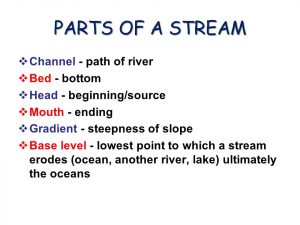
All drank the same spiritual drink. For they drank from the spiritual rock that followed them [in the desert with Moses], and the rock was Christ. –1 Cor. 10:4, NRSV, bold and additions mine
So the truth is men are not inherently — due to gender — leaders of women. Man is, however, the origin from where woman came. Go here for more information on Adam is the “Head” of Eve .
Lie #9 God is male (and only male)
There are two distinct and contrasting images of God in the Bible. The first form is found in the Old testament and the second form is found in the New Testament. Both forms are God. Both forms make visible bodily appearances. And both forms reveal profound aspects of God. Not surprisingly, one form is male and the other is female.
Since the first form comes to us through Moses’ experience in the desert, let’s take a moment to study Moses’ relationship with God. Notice that early on in Moses’ life, his relationship with God was based on fear; therefore, it was limited:
[God said to Moses], “I am the God of your father, the God of Abraham, the God of Isaac, and the God of Jacob.” And Moses hid his face, for he was afraid to look at God. –Ex. 3:6 NRSV, bold added
However, Moses’ fear-based relationship with God eventually matured, until finally it took a significant turn. Moses began to look God in the eye. Gone were the days of fear; Moses had advanced in love: “There is no fear in love, but perfect love casts out fear; for fear has to do with punishment, and whoever fears has not reached perfection in love” (1 Jn. 4:18, NRSV). Therefore, as the relationship between God and Moses grew things changed for the better:
Thus the Lord used to speak to Moses face to face, as one speaks to a friend. –Ex. 33:11 NRSV
I speak with him [Moses] face to face, Even plainly, and not in dark sayings; And he sees the form of the Lord. –Num. 12:8, NKJ, bold added
So here we have the first “form” of God and the one person who is intimate with this form is Moses. Not surprisingly, the visible shape or configuration of this particular form of God is that of a man:
And he [Moses] said, “Please, show me Your glory.” Then He [God] said, I will make all My goodness pass before you, and I will proclaim the name of the Lord before you. I will be gracious to whom I will be gracious, and I will have compassion on whom I will have compassion.” But He said, “You cannot see My face; for no man shall see Me, and live.” And the Lord said, “Here is a place by Me, and you shall stand on the rock. “So it shall be, while My glory passes by, that I will put you in the cleft of the rock, and will cover you with My hand while I pass by. “Then I will take away My hand, and you shall see My back; but My face shall not be seen.” –Ex 33:17-23, bold added
Then Moses went up [mount Horab], also Aaron, Nadab, and Abihu, and seventy of the elders of Israel, and they saw the God of Israel. And there was under His feet as it were a paved work of sapphire stone, and it was like the very heavens in its clarity. But on the nobles of the children of Israel He did not lay His hand. So they saw God, and they ate and drank. –Ex 24:7-11, bold added
This intimacy that Moses had with God did not transpire overnight. Meaning, it was not present at the beginning of their relationship during the encounter at the burning bush where Moses saw NO form. But eventually, Moses became not just a prophet, but a friend. A face-to-face, intimate friend who got to see the form of the Lord.
The next — very different — form of God comes to us from the New Testament:
Now when all the people were baptized, and when Jesus also had been baptized and was praying, the heaven was opened, and the Holy Spirit descended in bodily form like a dove upon Him, and a voice came from heaven which said, ‘You are My beloved Son; in You I am well pleased.’ –Lk. 3:21-22
In Luke 3:21 above, we have Luke describing what John the Baptist saw on the day of Jesus’ water baptism, “heaven was opened, and the Holy Spirit descended in bodily form.” John saw a “bodily form.” The Greek words used here are (bodily) “sōmatikŏs” which means “a whole body” and (form) “ĕidŏs” which means “appearance of shape.” So John literally saw a “body image” come down from heaven and he described this image as “like a dove.” You will notice the phrase “like a dove” does not mean an actual dove was seen—it is a simile.
A simile is a figure of speech comparing two relatively dissimilar things. In other words, a dove and God’s Holy Spirit are very different from each other (one is an animal and the other is God)—but similarities can still be drawn.
John did not see a dove, but he did see something, or rather someone. John is Jewish and the expression “like a dove” was a favorite and often used Jewish simile for female beauty and tenderness (see the Jewish Encyclopedia). This is why the term “dove” is used often throughout the Bible (including the Old Testament Apocrypha) to describe females:
You have dove’s eyes behind your veil. Your hair is like a flock of goats, going down from Mount Gilead. –Song of Solomon 4:1, NRSV
What John the Baptist saw was the form of a woman coming down from heaven and enveloping Jesus. This is what Jeremiah prophesied about long ago: “For the Lord has created a new thing in the land [of Israel]: a female shall encompass (surround on all sides, shield and lead) a man. –Jer. 31:22
This is also what James was speaking about when he said, “But the wisdom from above is first pure, then peaceable, gentle, willing to yield, full of mercy and good fruits, without a trace of partiality or hypocrisy. — Jas. 3:17, NRSV
These two distinct and contrasting images of God — that of a man and that of a woman — give us our definition of what it means to be made in the “likeness” of God. Therefore…
Since we are the children of God, we have no excuse for thinking that the deity looks like anything in gold, silver or stone that has been carved and designed by a man. –Acts 17:29, New Jerusalem Version, bold added
I say, “You are gods, children of the Most High, all of you; nevertheless, you shall die like mortals. –Ps. 82:6-7, bold added
So the truth is God may be male, BUT God is also female. Both men and women are image-bearers. For more information go to Is the Holy Spirit a Dove? and Image and Likeness of God
Lie #10 The Holy Spirit is a “He”
Most people call the Holy Spirit “he.” I am not one of those people. I am quite comfortable calling the Spirit who gave me birth “she.” And this is partly why… in the New Testament, yes… it’s true — according to some translations of the Greek — Jesus is seemingly calling the Spirit a “He.” But, we must remember… this is a translation.
The Greek (New Testament) word for spirit is “pneuma” whereas the Hebrew (Old Testament) word for spirit is “ruach.” Both words mean: a current of air, wind, a breath in reference to either a human, demon, or the Holy Spirit of God.
However, when we zero in on the word “he” (autos) in the New Testament in regards to Spirit, the Greek pronoun “autos” means, “she, he or it.” The word does not simply mean “he.” The translators of the Bibles which we all read have all chosen to use “he” or “it,” in reference to the Spirit of God but never “she.” Even though “she” is a valid option and I believe the correct option:
The Spirit Himself [autos] bears witness with our spirit that we are children of God…. –Rom. 8:16, NKJV
The Spirit itself [autos] bears witness with our spirit, that we are children of God. –Romans 8:16, DARBY
The Spirit herself [autos] bears witness with our spirit that we are children of God. –Rom. 8:16 (no one has chosen to translate autos like this)
The pronoun “he” can be rejected and so can the pronoun “it.” Choosing the correct pronoun to use then must come from knowing the person we are addressing. When “autos” is placed with Jesus, we know to use “he.” When it is placed with God, because God is referred to as our “Father” (a multitude of times), we feel completely confident in using “he.” But when the participle “autos” is placed with “pneuma” we are at a bit of a standstill — how should we relate to the Spirit and Breath of God?
So the truth is the Holy Spirit is not necessarily a “he” just because Bible translations refer to the Spirit as “he” — calling the Spirit “she” actually makes more sense. Go here for more information on The Holy Spirit is not a “He”



